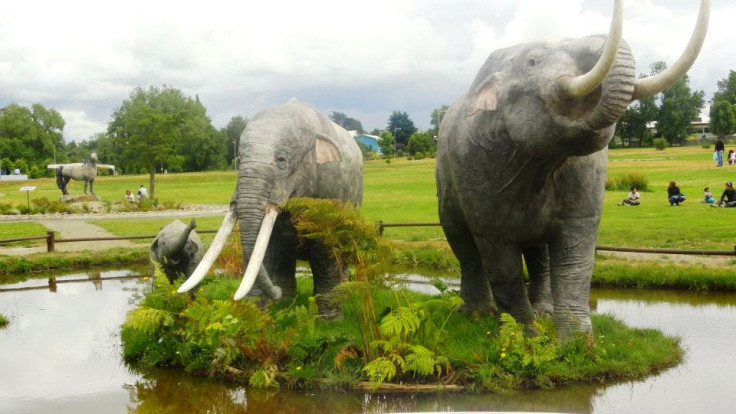Gomphotheres: Giant Elephant Ancestors 'Lived Alongside Humans in Prehistoric North America'

An ancient elephant-like animal believed to have disappeared from North America before humans arrived might actually have shared the land with early man, scientists have found.
Researchers from the University of Arizona have found that the mega-mammal, called a gomphothere, was likely hunted and eaten by the prehistoric group of paleo-Indians known as the Clovis culture.
The archaeologists discovered artifacts of the Clovis people mingled with 13,400-year-old gomphothere bones at an archaeological site in north-western Mexico.
Humans were known to have hunted the animals in Central and South America, but this is the first time a human-gomphothere connection has been made in North America.
"This is the first archaeological gomphothere found in North America, and it's the only one known," co-author Vance Holliday told the Science Reporter.
Researchers began excavating the skeletal remains of two juvenile gomphotheres in 2007.

The archeological site was dubbed El Fin del Mundo, which translates as the "end of the World", due to its remote location in northwestern Sonora, Mexico.
"At first, just based on the size of the bone, we thought maybe it was a bison, because the extinct bison were a little bigger than our modern bison," Holliday said.
In 2008, the researchers then discovered a jawbone with teeth buried in the ground.
"We finally found the mandible, and that's what told the tale," he added.
Gomphotheres were around the same size as modern elephants and once roamed North America.
Until now, they seemed to have vanished from the continent's fossil record long before humans arrived there, between 13,000 to 13,500 years ago, during the late Ice Age.
Yet the bones that the scientists have uncovered date back 13,400 years, making them the last known gomphotheres in North America.
The researchers also uncovered so-called "Clovis points" with the bones, such as spear tips, as well as flint flakes from stone tool-making and cutting equipment.
The Clovis culture is named after distinct stone tools found at sites near Clovis, New Mexico, in the 1920s and 1930s.
Of the seven Clovis points found at the site, four were among the gomphothere bones.
Gary Haynes, an archaeologist at the University of Nevada not involved in the study, told Live Science: "Early human explorers of interior North America opportunistically targeted the larger Pleistocene animals as part of their cultural pattern."
"Finding the oldest Clovis sites that far south really does suggest to me that Clovis probably originated somewhere in southern North America, and that has a lot of implications for the peopling of the Americas," Thomas Jennings, an archeologist of the University of West Georgia, told National Geographic.
The research was published in the journal Proceedings of the National Academy of Sciences.
© Copyright IBTimes 2024. All rights reserved.







